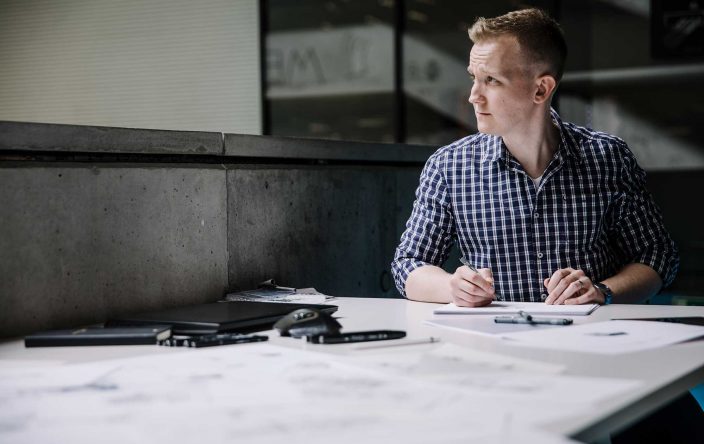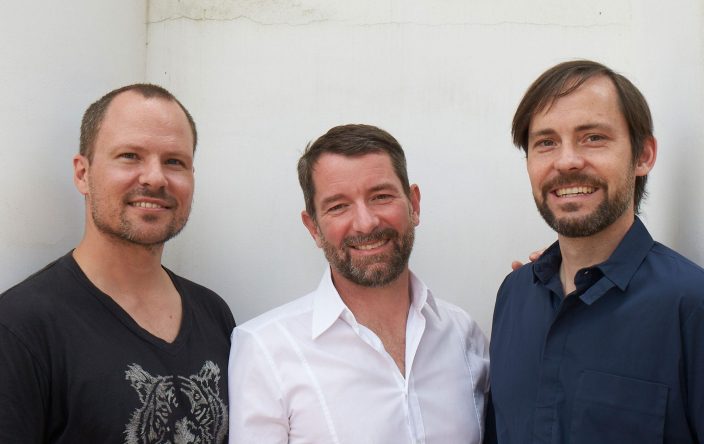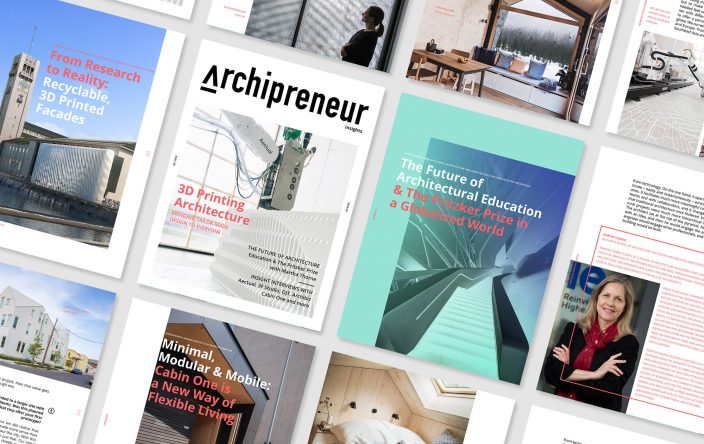
Placetailor – Combining Design, Development and Construction to Create Sustainable Housing
A very warm welcome to Archipreneur Insights, the interview series with the architectural, design and building community’s movers and shakers. In this series we get to grips with their opinions, thoughts and practical solutions and learn how to apply their ideas to our own creative work for success in the field of architecture and beyond.
This week’s interview is with Declan Keefe, Strategic Director of Placetailor in Boston.
Placetailor developed from a design/build company to a company that offers design, development and construction – or, as Declan calls it, a plug and play business model.
Declan has a lot of experience in finding land, getting projects off the ground and placemaking and is happy to share his expertise step by step with you! His marketing strategies go beyond websites and business cards and could be rather called a philosophy than a strategy.
Keep on reading to get inspired by an architect who believes in sustainability, collaboration and the power of community.
Enjoy the interview!
Could you tell us about Placetailor and about your role in the company?
I’ve been working in the company from the beginning. I took it over a couple of years into the business. I’m not the initial founder; I am the Strategic Director.
Placetailor in its current form is an architecture, construction and real estate development company. And my role specifically is to link those three arms of the business. I make sure architecture speaks to construction and construction speaks to development and all the other permeations of that as well.
Further I am setting the course for the company as it relates to our mission and our business model. What are things we care about, what are things that we have to have in a project for it to be deemed quality Placetailor project.
What is Placetailor’s business model?
When Placetailor was first started, we were what is more commonly known as design-build company. The model came from the thinking that the architecture and the construction professions these days are always at odds with one another. And we think that it’s quite a detriment to the profession.
The origin of both professions came from the master builder. So we created Placetailor with the question in mind “How can we recreate today – when we’re pushing more and more towards specialization – a business that can still do specialized work but also is able to be the architect and the builder?”
Originally we were looking for people who work as a carpenter and a designer. Today we still have some people who work on both sides of the business but there are also some people, who just work in construction or just on design.
A few years into the business we made a major transitions: to become a developer as well. And we felt like it fit very much in the conversation related to master builder because typically that was the way it worked. The master builder would work directly with the equivalent of a developer. The term didn’t exist back then, but it was someone building a cathedral or his or her mansion.
So we thought, internally, we could have that model expanded so that the development entity itself, which technically is a separate business, hires the architecture company, which is really ourselves, to do the design work and then hires the construction company, which is really ourselves again, to do the project as we’ve envisioned it on the development side. To the outside world, they look like one business: Placetailor that does architecture, construction, and development. On the inside, it’s a little more complicated because things are broken up for legal reasons, security and insurance.
Today about 75% of our work comes from our own development.
This model allows for our business to operate as what I call plug and play. We can be just the architect, the builder or the developer, or in a sort of the ideal visualization of the business model, we’re all of them.
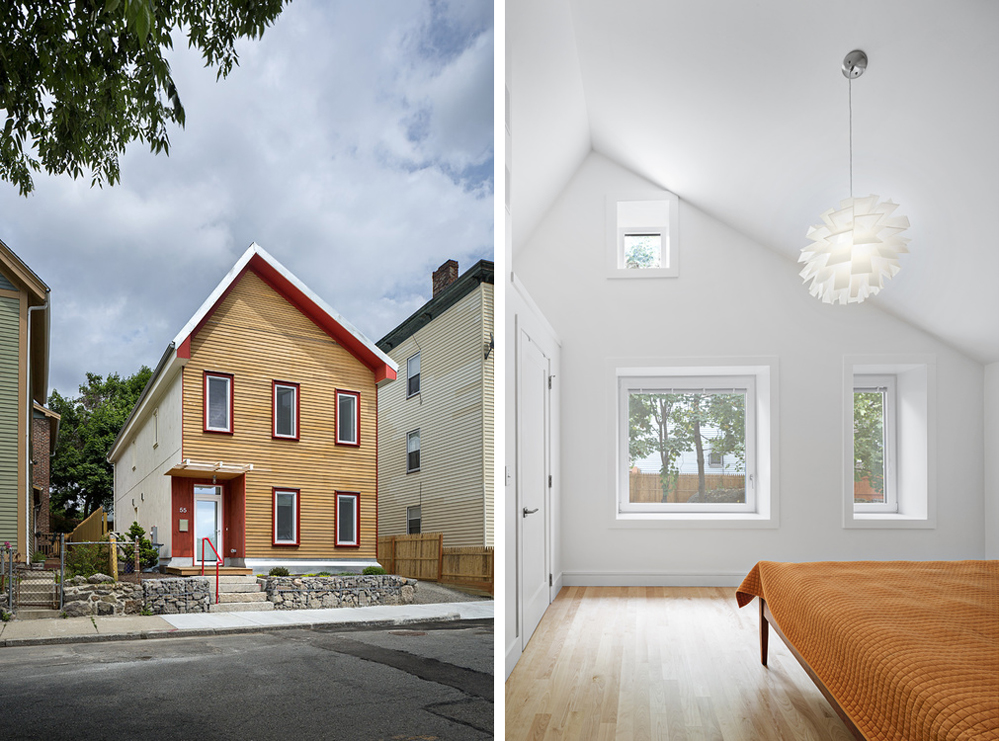
How do you find land?
There are two paths:
The first is really a very simple one and maybe it’s hard to imagine until you do this. But it’s literally just driving around and looking for land.
The hunt looks different every time. It could be we see a piece of land and call the owner and they say, “Sure. We’ll sell it.” It could be easy as that. It could be years and years of, ”Well, sure, we’ll sell it, but we have all these tax issues.” And we’ve got to help work out the entire back end for them.
The other way, which I think is maybe even more of a fruitful path to take because it’s not just helpful for finding land but it’s helpful for really operating a business in general, is getting out and meeting people and being willing to collaborate and being willing to have a sort of open-ended conversations about something that could happen in the future. It’s the long-term approach.
When you collaborate you’re working with clients again. It’s not just a speculative real estate development. You bring them into your team. And they can help finance the project. So they’re both client and collaborator.

For architects who know very little about real estate development, how would you break down the process of getting the first project off the ground?
I think there’s something before the land hunt, which is really determining what it is you’re trying to get out of the project. Why do you want to be a developer and not just an architect? What type of development are you trying to do? Is it a residential development? Are you trying to do commercial?
And then looking at the markets that are near you as what could it bear. Analyzing a market means being in the area, being in the neighborhood, spending time at a coffee shop next door to the place you want to build or develop something, and learn what the people are saying that are there and what they feel, and how you could fit into that story.
A piece of land is a useful starting point because it’s going to be a fixed number. You know this land is on the market at certain price, and you know that you want to put an offer in that’s 10% higher than that. And because that’s how you think given what you’ve found from your research that the market will bear and you may actually get your offer accepted.
Then there’s the obvious question of where does that money comes from, right? There are many different answers. One example I mentioned already which is you could have already built up relationships, found people to collaborate with. For example you’re looking at a piece of land that three specific families want to live in. Now you pitch it to them first. You say, “Would you want to live here? We think we can fit a house that’s this big.”
Some of the initial architecture work is doing your zoning analysis, looking at your code analysis, what could actually fit on this potential lot. And then pitching it to the people, who want to live there or to some investors. You have to have a network of people who might be interested in supporting you as an individual at that point.
And there are those people out there who have a strong enough vision that they’re willing to support you. And sometimes they’re willing to support you because they know that they’re probably going to get a deal, if it’s your first project. Just to be honest about it is that you’re going to have to give and take a bit on your first one to make something happen.
But now you imagine you have that money, you put your offer in and the offer is either accepted or denied. If it’s accepted, then the next stage is the purchase and sale agreement, which is where all the contingencies of the deal really get ironed out. So that’s going to be in communication usually between realtors. It could be a direct communication though often the realtors are the go-between. And then it’s usually realtors who are then talking to lawyers. And the lawyers are really the ones hashing it out. And then it filters back through to the realtors and then out to the buyer and seller.
We often operate without realtors because we like to be more directly connected to the process. And so in addition to architecture, construction and development, usually, we’re also doing our own sales for the scale that we’re at currently.
So then let’s assume that our purchase and sale gets approved. Now likely that means you’re putting in some additional money. So the offer had a small amount. The purchase and sale would mean you’re putting a deposit in. So, you’re going to put in some small percentage, by 15% of the total sale. At which point you’re scheduling for your closing that and which when you’d actually own the land.
And it would be at that point where the attorneys would do a final sweep of, “Is the lot salable?” And if it is and there’s not really that much more negotiation that happens between the purchase and sell in the closing. At the closing itself, it’s a whole series of paperwork and you have to get your insurance lined up, and all of those. There’s a lot of sort of back end to it there.
If you’re getting financing through a bank, it becomes a little more difficult for a first developer to prove that they should take that risk, but it’s feasible with the right bank and the right project. If you’re working with partners, such as homeowners who want to live there, they’re getting their finances together maybe through their banks or maybe just through capital that they have and putting it in place. You’re probably forming an LLC with the entities who will own it in the end. And even we do that. We have an LLC per project. So we start a new company every time.
And then let’s say that the closing is done and we now own the piece of land, at which point we go beyond that initial massing or zoning study to figure out what could go there. And for us, we just start the architecture. If you’re just a developer, you’re hiring an architect. And you do the design, you submit, l and if all goes well, you get your approvals.
Then we submit again for building permit. And then we have building permit, we build it because ideally, we will have already gotten approval for our financing from the beginning. You’ll have to finish that paperwork to get the second round of release for the construction lending. And then once you build the whole project, you’ll get construction lending throughout.
And then when it’s built, depending on the type of project you’re working on, either you sell it or you could rent it if that is your chosen development method.
And those processes look different whether it’s commercial or residential or whether it’s what we call condos here or co-op housing, or you know whatever the processes. It looks slightly different to sales. And then hopefully, at the end, you have some money left and that would be the profit of the project.
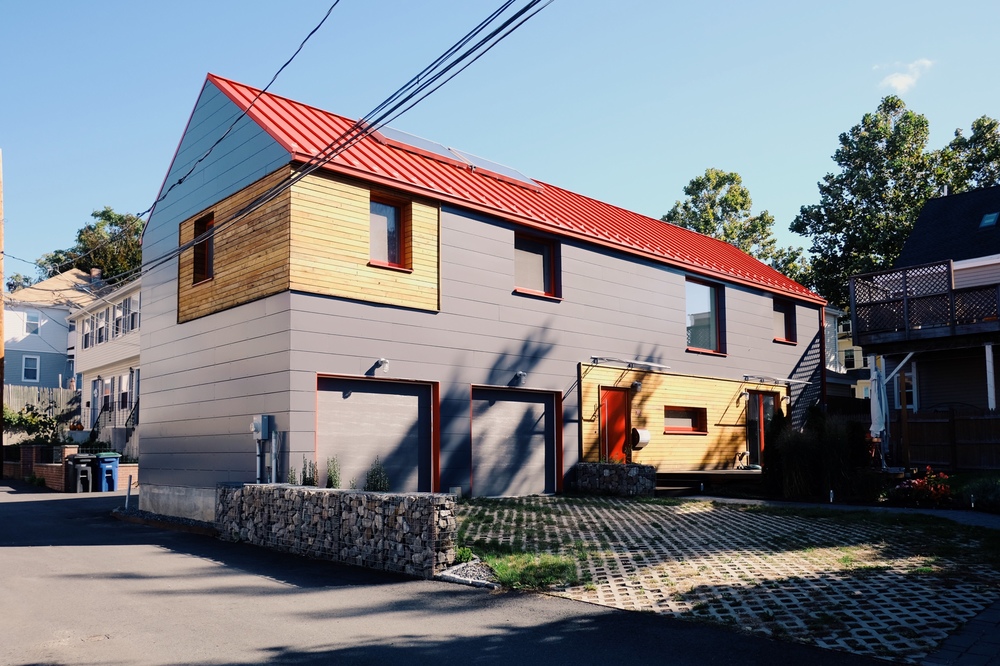

What marketing strategies have been most effective to find new clients, promote services or sell your products?
I think the thinking about marketing and the definition of it should be expanded beyond your web presence or your business card to whatever it is that people are left with after they’ve come in contact with your business in any way. So that contact could be through social media, through giving lectures at a local conference or through students at the school that I teach at. Or it could be me running into them in the coffee shop. And I think being really cognizant that all of this relates to marketing is very important.
And for us, we have a few things, which we think of as differentiators. And a differentiator works for us in our marketing, in our branding. And it works for us fairly well in the sales of our actual units because the project themselves become differentiated by the fact that we have these differentiators in our business.
So one is our business model, that we’re the architect, developer and contractor. That’s great for clients because they feel like they can trust one entity. They don’t have to worry about bringing in somebody else.
Another one is that transition we made, around the same time we started doing development: we became an employee on cooperative.
It’s a strong social mission of ours, that anyone that works within our company has the potential to become an owner, if they stay with the company for three years or more.
And so it gives a longer-term commitment to the business. And the cooperative model that we use is equal profit share, equal vote.
And so depending on who I’m talking to, this fact is useful to show we have the skill set internally for design, for architecture, development and construction. We care about our people.
The third differentiator that we have is related specifically to the way in which we do design and construction. And this one was really able to launch the business early on. And so we work exclusively on high performance, energy efficient and sustainable architecture. So we won’t take projects that aren’t that way. It is who we are. We believe that is the baseline and we need to be raising the bar even higher.
And then I believe that you need to have a basis of a solid branding as it’s typically thought of where they’re going to go to your website and it needs to feel the same way that your conversation just felt. And you need to hand them business card that feels the same way that you’re conversation just felt like because if you’re mixing your messages, they’re not going to believe that’s true.
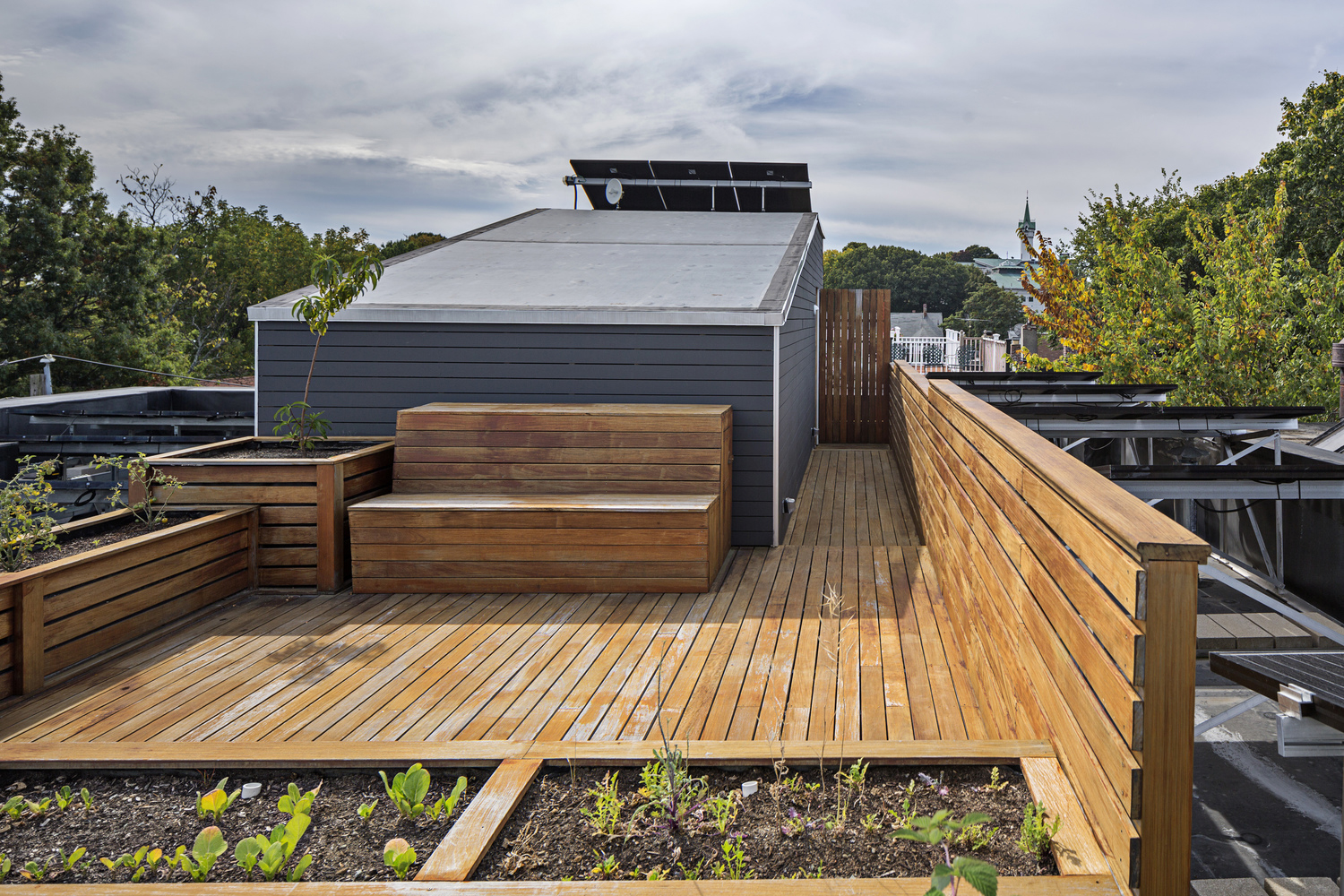
Everybody is talking about placemaking these days. What’s your strategy on this?
I think it is all about being engaged with all the stakeholders and not just the client. And for us, we have a business model that allows us to do that a little more collaboratively even because we have the architect, the builder and developer in the room. So we can quickly do a lot of those conversations upfront.
But even if that’s not your business model, I think there needs to be a considered effort to get the builder and the developer in the room and have those conversations. And maybe they could all come to the community meeting so that they can all get it. So I think that’s the basis of what placemaking should be about.
In addition in our company we do the design very collaboratively. I fear the idea of a solo architect as developer who can get too caught up in their ego as an architect. Who then wants to design their masterpiece and try to put all of the things that they imagine they ever wanted to do in one project. I have seen this happening before.
And that actually doesn’t make good architecture in the sense of good placemaking. It makes good pieces of architecture that operate on their own. And it’s probably too expensive and you probably won’t make money on the development.
Whereas, if you are thinking about the design collaboratively, it’s not just one person’s vision that appeals to just that one person. And I think it’s fine if you’re building your own house. If the development is anything but your own house, I would urge you to get out of your own head and into the community and with other people.
I think that’s the process of placemaking: connection to the community and a collaboration internally.
Do you have any advice for archipreneurs who are interested in starting their own business?
My biggest advice is: Have the right reason for doing this. Truthfully, it’s a lot of administrative work. The reality behind the romanticism of architect as developer is you do less of the fun stuff and more of the not fun stuff. But you do get a little bit more freedom.
And potentially, if you do it well, you can make more money. But if you do it just okay, you’ll loose a lot of money and time, and you could disrupt your whole career. So my advice is: Do not take it lightly.
The second piece of that advice is to not just know why you’re doing development, but know what you’re trying to achieve as a person in this world. What is the impact you want to make? We as a firm are looking at our total impact, our carbon footprint as a business, the carbon footprint of each building, the social footprints of the buildings. How is a building affecting the place? How are we affecting the people who we get to work with? And we want all of those impacts to be positive.
Because if we’re too caught up in the fact that we are making it just for the sake of making a building, we’re not looking at the potential positive impact we can have on the world. We’re setting in stone something for hundreds of years potentially that isn’t what we really want to represent as people.
The connection between architect and developer gives us the control to start making those decisions unlike you have in most other scenarios. If you’re just the architect, you can make some of those decisions. But the clients make most of those decisions. They won’t let you do energy efficiency. They won’t let you do those community meetings.
But when you start to have control, it really means you need to have your moral code in the right place so that you yourself make the decisions that are right for the future generations.
How do you see the future of the architectural profession? In which areas (outside of traditional practice) can you see major opportunities for up and coming developers and architects?
One of the things that will change how the industry works is the automatization of things in robotics. And I think that it is going to have a much greater impact on the architecture profession than it feels like to me. And I say that because the modular and prefab buildings have been of interest for a long time, but they’ve not been out major in market share. And it’s partly because the processes that have been for modularization of architecture have still actually been pretty inefficient.
And we’re getting to the place with automatization and robotics. But that’s not going to be the case for very much longer. And we’re going to have such automatization that the construction field is going to become a completely different thing.
And in some cases, I think the architectural profession will start to disappear, as we see it now, because it’s the case that most architecture work is done for just the top 1%. And this goes back to my advice about what is it you really want to be doing. If those are the people that you’re trying to support with your work, that’s total your prerogative.
If we’re trying to do design work for the rest of the world, then we will have to start thinking about different business models. One of them maybe to be working alongside this modularity and improvements in manufacturing such that the result of that is not just cheap, inefficient, uncomfortable houses, but quality, high-performance, healthy, light-filled, comfortable places for people to live. And that’s the work of architects.
And it would be too easy for us as we go down the path of automatization for that to go the wrong way. And so I think we shouldn’t leave that in the hands of just the roboticists and the engineers. Even though I’m sure that they’re wonderful people, they’re not thinking about what the architects are. So we need to be in those processes and thinking ahead.
About Declan Keefe
Declan is a founding member of Placetailor, and is a current owner as well. As the strategic director, he keeps the company in order and oversees all of Placetailor’s projects. If you are interested in Placetailor helping you with a project, Declan would be the guy to talk to. Declan is LEED AP, a certified passive house consultant, and like everyone at Placetailor, he is a designer as well as a builder.
Join our Newsletter
Get our best content on Architecture, Creative Strategies and Business. Delivered each week for free.

JOIN THE
ARCHIPRENEUR ACADEMY
- 9 Stage Studio Growth Roadmap
- Library of In-Depth Courses
- Checklists and Workbooks
- Quick Tips and Tutorials
- A Supportive Online Community








